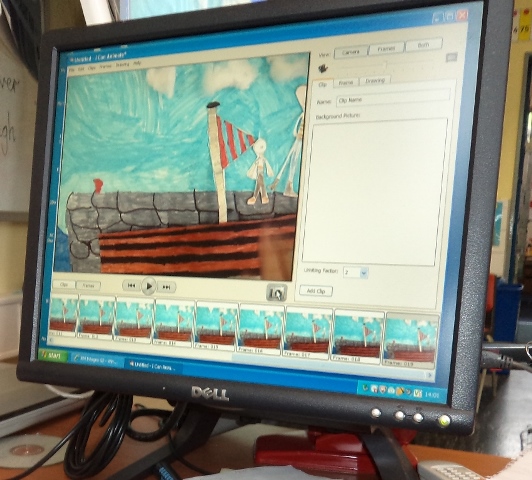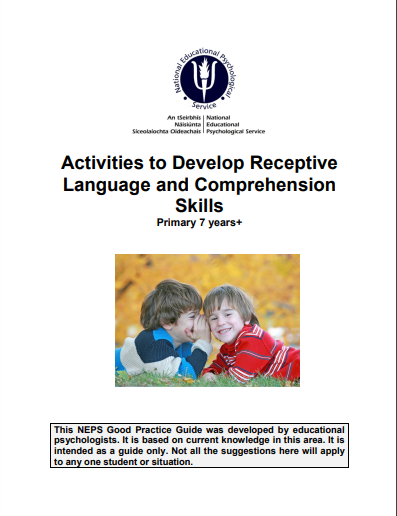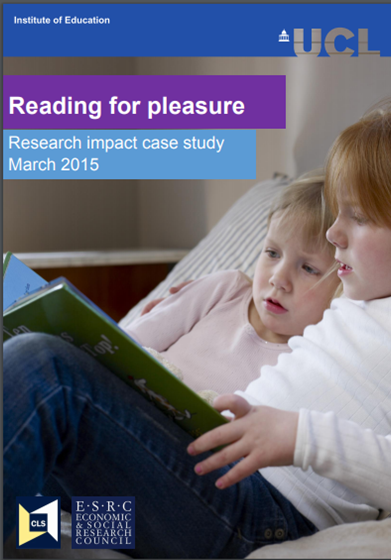How do you help students improve their comprehension skills?
Researchers have found that teaching reading strategies are a key element in developing student comprehension. However, many teachers lack a solid foundation for teaching these reading comprehension strategies. Therefore, teachers need to be prepared on how to design effective comprehension strategies and how to teach these strategies to their students. Therefore this study aims to study the effective reading strategies in order to improve reading skills in language classes. The study is an action research applied to a number of 14 students in an intermediate level integrated skills course. The main question of the study is “Would reading strategies help my students’ reading comprehension studies?” Hülya Küçükoğlu has produced an excellent research paper on the subject.

What is receptive language (understanding words and language)?
Receptive language is the ability to understand words and language. It involves gaining information and meaning from routine (e.g. we have finished our breakfast so next it is time to get dressed), visual information within the environment (e.g. mum holding her keys means that we are going to get the car, a green light means go), sounds and words (e.g. a siren means a fire engine is coming down the street, the word ball means a round bouncy thing we play with), concepts such as size, shape, colours and time, grammar (e.g. regular plurals: cat/s, regular past tense: fetch/ed) and written information (e.g. signs in the environment like “no climbing”, written stories).
Some children who have difficulty understanding oral language (words and talking) may appear to be understanding because they may be able to pick up keywords and get visual information from the environment or from gestures.
Why is receptive language (understanding words and language) important?
Receptive language is important in order to communicate successfully. Children who have understanding difficulties may find it challenging to follow instructions at home or within the educational setting and may not respond appropriately to questions and requests. Within the school setting, difficulties in understanding may lead to attention and listening difficulties and/or behavioural issues. As most activities require a good understanding of language, it may also make it difficult for a child to access the curriculum or engage in the activities and academic tasks required for their year level of school.
What are the building blocks necessary to develop receptive language?
- Attention and concentration: Sustained effort, doing activities without distraction and being able to hold that effort long enough to get the task done.
- Pre-language skills: The ways in which we communicate without using words and include things such as gestures, facial expressions, imitation, joint attention and eye contact.
- Social skills: Determined by the ability to engage in reciprocal interaction with others (either verbally or non-verbally), to compromise with others, and be able to recognize and follow social norms.
- Play skills: Voluntary engagement in self-motivated activities that are normally associated with pleasure and enjoyment where the activities may be, but are not necessarily, goal oriented.
Strategies to Develop Receptive Language
15 activities in this resource pack are intended to be used by teachers and/ or
parents to help develop the language skills of children, typically those in the age
range 7 -12 years. They can be used with individuals, small groups or whole
classes. They typically do not require any additional equipment or resources. We
expect that these activities will be of particular use to children receiving School
Support or School Support Plus.
There are numerous ways to use animation in the curriculum. Below are some ideas to get you going. I have used some very simple software by Kudlion called "I can Animate 2" This is very simple software to use and can easily be used by young children. The Animation above was created by a group of 6 and 7 year olds.
The company below produce some excellent software.
A Step by Step Guide to Animation for Education
Step 1:BRAINSTORMING:
- Problem Solving
- Improved fluency of language
- Collaboration and Cooperation
- Research
The brainstorming process encourages all students to actively engage in asking questions, researching and discussing. Students discuss various themes/story ideas for animation and reach agreement on a particular project.At this stage they learn to problem solve, promoting fluency of language and flexibility of ideas. They learn to use language effectively to elaborate on their own ideas and reach consensus on the final project, encouraging collaboration and cooperation.
Step 2:STORYBOARD:
- Visual Literacy Skills
- Enhanced Literacy (Reading and Writing Skills and Vocabulary)
- Communication and Language Skills
- Collaboration and Innovation
Storyboarding involves reading about the particular topic the students wish to animate.For instance a chapter from a novel or a scene from a play. The students must create a storyboard that reflects the action they plan, identifying the characters and agree on the various sets /props required. Here they will learn to experiment with and develop visual ideas using basic sketches enhancing their visual literacy skills. There will also be an overall enhancement of literacy through reading of text and the use of descriptive language. Communication and language skills also develop through the acquisition of new vocabulary relating to animation and movie making in general. At this point the students also have to agree on the narrative as well as sound effects and music and so forth.
STEP 3:SETBUILDING:
- Coordination of Thought and Activity
- Critical Thinking
- Team Building
- Appreciation of Various artisitc Media
- Collaboration
- Communication
Students allocate various tasks to each other . The sets must be created to reflect the action being depicted in the movie requiring the coordination of thought and activity. Students learn to work as a team while exploiting and promoting individual strengths within that team. The student will also learn various visual techniques used by the media, eg. The use of lighting to depict mood, atmosphere or the passing of time. When they begin filming they will be able to appreciate and assess the effectiveness of the visual techniques chosen. At this stage too, the physical characters are created either through modelling clay, brick figures or any other material that reflects both the storyline and the ideas of the students. They learn how to work with various artistic materials and understand the advantages and disadvantages of using one type over another. The student will learn to critically analyse the merits of such materials and their suitability for various types of projects.
STEP 4:ANIMATION:
- Cooperation and Collaboration
- ICT Skills
- Visual Literacy
This is always the most enjoyable part for students and teachers. All that is required when using I Can Animate is a PC or laptop computer and a WebCam or Camcorder. Students enhance their overall ICT skills, gaining confidence in the navigation of new software and physical use of peripheral devices.
STEP 5:EXPORT:
- Critical Analysis
- ICT Skills
Students get the opportunity to complete their animated multimedia presentation by exporting their movie to a file format for upload to online video sharing sites such as SchoolTube or YouTube or for presentation in class on a TV. This completes the process allowing the students to reflect on the work they have done and the steps taken and the result is reward in itself.

Digital Literacy and ICT
Using a digital movie camera is a great way to keep records of pupil work, to encourage creativity and is an ideal medium to help deliver cross cutting themes and is thus an ideal tool to use across the curriculum. The following links are provided to give you some ideas for using animation across the curriculum.
Using Animation in Schools
A selection of lesson ideas suitable for a range of different courses, ages, and curricula, that enables teachers and students to use video as a creative tool for teaching and learning. These suggestions have been developed in association with teachers around the world, educational organisations, and members of the Moviestorm Education Academy.
Using Animation to support literacy
Catherine Elliott from the Sheffield South City Learning Centre has produced some excellent guides to help you introduce stop frame animations.
How art and animation can reinvent education
“We know that learning through the arts and culture and creativity enriches the education experience, stimulates children’s imagination and provides them with exciting and fulfilling experiences they’re able to build on for the rest of their lives".
Handwriting
This handwriting website is one of the most comprehensive (and free!) websites dedicated to handwriting.
Its aim is to support and empower schools, parents and carers so that they can logically and progressively help children develop a comfortable, speedy, fluid and legible handwriting style.

An animation I created with my Year 2 Class. The film is very useful for internalising higher order language skills particularly at the sentence level. The film provided a rich context to produce some amazing writing.
[embedyt] https://www.youtube.com/watch?v=xYdUyXWtgps[/embedyt]

Animation can often be seen as quite a complex and time consuming task; however educators need to take a more holistic approach in their reflections about the value of animation.
- Communication Skills
There is a great deal of collaborative planning and discussion involved in an animation. Once production starts, the group can then look forward to a whole new level of creativity and communication. There will also be times when the students have to listen carefully to each other and respond to what they have heard. Groups that do not carefully listen to each other or collaborate well will soon realise that this essential skill is vital to the project.
- Building Bridges
Creating animations is by no means a solitary pursuit. The process on many websites now also involves sharing your creations with your peer group, whether within the classroom or further afield by making students’ movies visible to others using the same tool. The opportunities this provides for collaboration with students from all over the world should not be underestimated, and it carries the additional benefit that a language barrier can be immediately overcome through the medium of animation, so it is a fantastic starting point for building up ties and a sense of community across borders with your students.
- Self-expression
For many students, self-expression can be a huge challenge, and traditional methods of art such as drawing and painting, while hugely enjoyable for some, can feel difficult and worrying for those who don’t necessarily have a huge amount of natural artistic talent. But the beauty of animation is that ready-made characters can be placed into pre-drawn environments, while students still retain the creative reins by choosing everything from plot to speech bubbles.
- Technical Skills
While there are a range of fantastically simple animation tools available for younger children, it can also be a great gateway for older students to learn much more difficult technical skills too. There are plenty of online guides available to download so students don’t have to be experts before they begin! Often they may need to engage in some excellent problem solving in a similar way to the world of work.
- Presentation Skills
The other brilliant thing about animation is that it provides an exciting and dynamic platform to encourage students to give interesting, engaging class presentations. Gone are the days of students falling asleep in the back of the class while their classmates stood at the front of the room, reading from a sheet of paper! Animation is a great way to encourage students to put greater effort into their presentations, making slide shows, visual explanations of concepts and really visually connecting with their audience, a great skill for the future.
Reading For Pleasure
There is strong evidence linking reading for pleasure and educational outcomes. We know that academic attainment is of vital importance, but the benefits of reading for pleasure go beyond this and stretch throughout a person's life.
A 2013 research paper by two academics at the Centre for Longitudinal Studies on the
beneficial effects of reading for pleasure in childhood has attracted a remarkable amount of
interest from schools, libraries and literacy organisations around the world.



